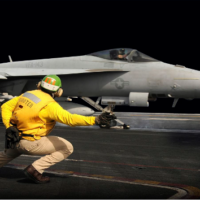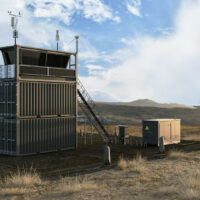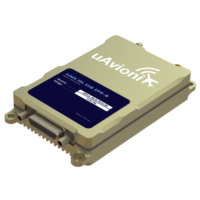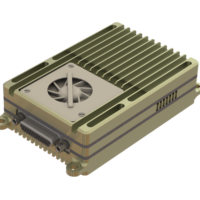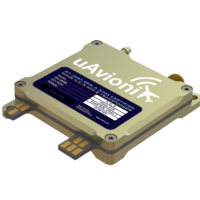Military Air Traffic Control Systems & ATC Equipment
Air Traffic Control (ATC) is the process by which aircraft are monitored and controlled from the ground. ATC is almost as old as powered flight having grown in importance since the 1920s. Croydon Airport was the world’s first to have a control tower which entered service in February 1920. Ensuing years saw the United States postal service adopt US Army protocols to monitor aircraft as they traversed the country. Installations used for this purpose were known as Air Mail Radio Stations (AMRSs). These paved the way for ATC is we know it today which grew and complexified globally in the following years.
ATC Radar
Air Traffic Control chiefly depends on radar, radio and equipment used by controllers on the ground to track and communicate with aircraft in their locale. ATC uses two distinct, yet complementary, radar systems:
Primary Surveillance Radar (PSR) employs radio transmissions which physically collide with an aircraft in range. The collision of these transmissions reflects them to the radar’s antenna as echoes. By processing these echoes the radar computes the position of the aircraft in the sky, its bearing and speed.
A PSR provides no information on an aircraft’s identity. This is derived using a Secondary Surveillance Radar (SSR) which works with an aircraft’s transponder. Transponders are combined radio receivers and transmitters. The SSR transmits a specific radio signal which will be recognised by the aircraft’s transponder. Any aircraft within the SSR’s range will have their transponder automatically triggered by the SSR’s signal. Once triggered, the transponder transmits details on the aircraft’s identity and altitude back to the SSR. The aircraft’s identity is determined by a four-digit ‘squark’. A squark is assigned by air traffic controllers at the start of the aircraft’s flight, or as it moves through a specific section of airspace. Altitude information is taken from the aircraft’s altimeter and sent as part of the aircraft’s reply to the SSR interrogation.
ATC radars often have PSR and SSR antennas located on the same structure. They will send out their respective signals in the same direction receiving returned signals at the same time. SSR information is overlaid onto the aircraft’s position as derived by the PSR. The controller sees both items of information fused together on their radar screen. PSRs and SSRs are used in and around airports. Aircraft moving between sectors of controlled airspace are detected and tracked via en route radars combining PSR and SSR functions.
Communications
Controllers must communicate with aircraft to give pilots instructions on headings and altitudes they should follow. This is imperative to avoid mid-air collisions and ensure the safe and efficient movement of aircraft en route, and to and from airports.
Radio remains the dominant means by which aircraft communicate with air traffic control and with each other. Airband is the collective term for the segment of the radio spectrum reserved for use by aircraft and air traffic controllers.
- Aircraft use a Very High Frequency (VHF) radio waveband of 108 megahertz/MHz to 137MHz.
- Satellite Communications (SATCOM) wavebands of 1.5 gigahertz/GHz to 1.6GHz are used alongside High Frequency (HF) wavebands of three megahertz to 30MHz.
Both HF and SATCOM are employed when the aircraft is beyond the line-of-sight (BVLOS) of VHF transmissions. This is important when an aircraft is traversing oceanic areas perhaps several hundreds of miles from radar and VHF radio range.
Automatic Dependent Surveillance-Broadcast (ADS-B)
The tracking of aircraft, particularly when beyond such ranges, will ease in the future with the advent of initiatives like the US-led Automatic Dependent Surveillance-Broadcast (ADS-B) concept. ADS-B introduces a new generation of aircraft transponders. These share the aircraft’s position based on its Global Navigation Satellite Signal (GNSS) derived location. Using ADS-B, the aircraft’s transponder continually and automatically transmits its position regardless of whether or not it is in radar range.







